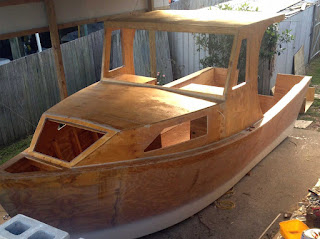Handmade Wooden Boat Plans for Skilled Boat Builders
This document provides comprehensive guidelines and considerations for skilled boat builders undertaking the construction of a handmade wooden boat. It is assumed that the reader possesses a significant level of woodworking expertise, familiarity with boatbuilding techniques, and access to appropriate tools and equipment. These plans are not intended for novice boat builders; the complexity and precision required demand a high level of skill and experience.
I. Choosing a Design: Navigating the Design Landscape
The initial and arguably most critical stage involves selecting an appropriate boat design. This decision hinges on several crucial factors, including intended use, skill level (although assumed advanced here), available resources, and personal preferences. A thorough assessment of these elements will ensure the successful execution of the project.
A. Considering Intended Use
The boat's intended function significantly influences the design parameters. A fishing boat demands different characteristics than a pleasure craft or a racing shell.
- Fishing Boats: Require stability, ample storage, and often a shallow draft for navigating shallow waters.
- Pleasure Boats: May prioritize comfort, aesthetic appeal, and speed.
- Racing Shells: Demand lightweight construction, hydrodynamic efficiency, and exceptional stability at high speeds.
B. Evaluating Available Resources
Resource availability—both material and financial—plays a pivotal role in design selection. Factors to consider include:
- Timber Selection: The type and quality of timber available will dictate design limitations and influence the overall structural integrity.
- Tooling and Equipment: Complex designs necessitate specialized tools and machinery; ensure that you possess or have access to the required equipment.
- Budgetary Constraints: The cost of materials, tools, and potential assistance must be carefully considered.
C. Analyzing Personal Preferences
While practicality is paramount, personal preferences should not be entirely overlooked. The boat should be aesthetically pleasing to the builder and reflect their individual style. Consider exploring various design styles and aesthetics to determine the best fit.
II. Material Selection: The Foundation of Durability
The selection of appropriate timber is paramount to the longevity and performance of the wooden boat. The choice of wood depends on its strength, durability, workability, and resistance to rot and marine borers. Careful consideration of these properties will contribute to a robust and enduring vessel.
A. Strength and Durability Considerations
Strength is crucial for structural integrity, especially in areas subjected to significant stress. Durability ensures the boat's resistance to wear and tear from exposure to the elements.
- Hardwoods: Offer superior strength and durability but can be more challenging to work with.
- Softwoods: Easier to work with but may require additional reinforcement in critical structural areas.
B. Workability and Finishing
The ease with which the timber can be worked and finished is a practical consideration. Some woods are easier to shape, plane, and join than others.
- Grain Pattern: A uniform grain pattern facilitates easier shaping and reduces the risk of splitting.
- Finishing Properties: Consider the wood's ability to accept finishes and stains to protect it from moisture and UV degradation.
C. Resistance to Rot and Marine Borers
Exposure to moisture and marine organisms necessitates the selection of timber with inherent resistance to rot and marine borers. Treatment options, such as pressure-treating, should be considered if necessary.
- Naturally Resistant Species: Certain timbers possess natural resistance to decay and marine borers, reducing the need for extensive treatment.
- Protective Coatings: Application of appropriate marine-grade coatings is essential to enhance durability and prevent degradation.
III. Construction Techniques: Precision and Mastery
The construction phase demands meticulous attention to detail, accuracy, and the application of proven boatbuilding techniques. Experienced builders will readily understand the importance of precise measurements, robust joinery, and thorough fairing.
A. Layout and Cutting
Precise layout and cutting of the timber are fundamental to ensuring the accuracy of the boat's structure. Modern techniques, such as computer-aided design (CAD) and computer numerical control (CNC) machining, can enhance accuracy, but traditional methods remain essential for skilled builders.
B. Joints and Fasteners
The selection and execution of appropriate joints and fasteners are crucial for the structural integrity of the boat. Traditional joinery techniques, such as mortise and tenon, scarf joints, and rabbet joints, are vital in creating strong, durable connections.
C. Fairing and Finishing
After assembly, the boat's hull requires careful fairing to ensure a smooth, hydrodynamic surface. This involves planing, sanding, and filling any imperfections. The finishing process involves applying protective coatings to enhance the boat's durability and aesthetic appeal.
IV. Advanced Considerations: Beyond the Basics
Experienced boat builders will understand the nuances and intricacies beyond the fundamental construction process. This section addresses key considerations for optimizing performance and longevity.
A. Structural Reinforcement
Strategic reinforcement in areas of high stress is crucial for ensuring the boat's long-term structural integrity. This might involve the use of additional timbers, epoxy resins, or fiberglass reinforcement.
B. System Integration
The integration of various systems, such as rigging, propulsion, and electrical systems, demands careful planning and execution. Consider aspects of ergonomics, safety, and maintenance accessibility.
C. Testing and Refinement
Rigorous testing is essential to identify any weaknesses or imperfections before launching. This may involve load testing, leak testing, and sea trials to assess the boat's performance and identify areas requiring further refinement.
This document serves as a comprehensive guide, yet it cannot encompass every detail of handmade wooden boat construction. Skilled boat builders should supplement this information with their own knowledge and experience. The process is challenging but immensely rewarding, resulting in a unique and enduring vessel.


0 comments:
Post a Comment